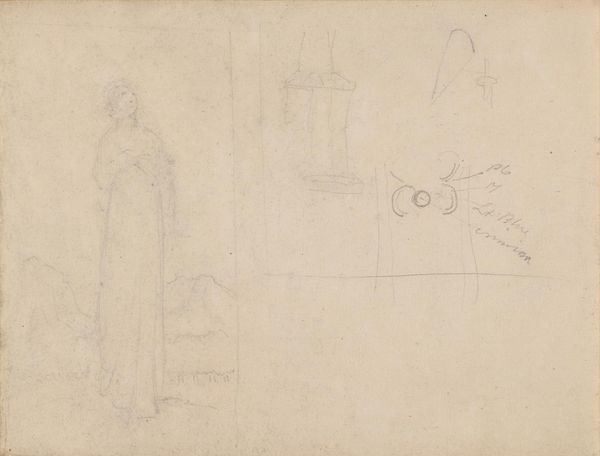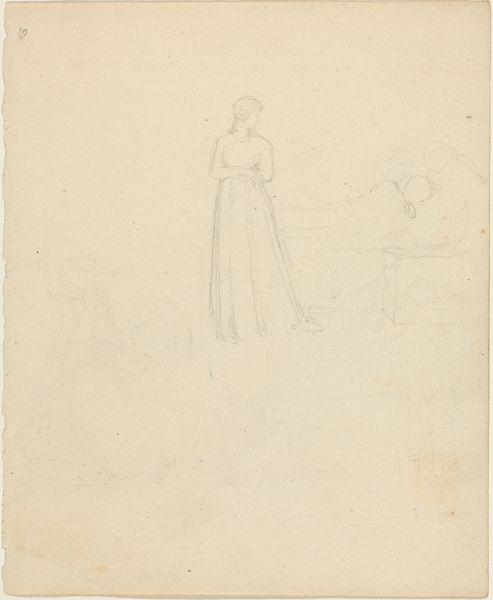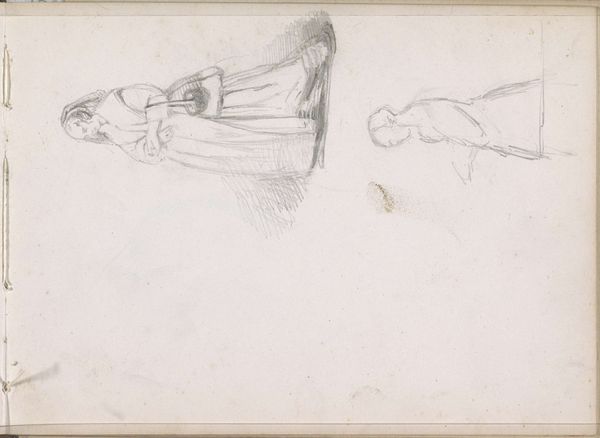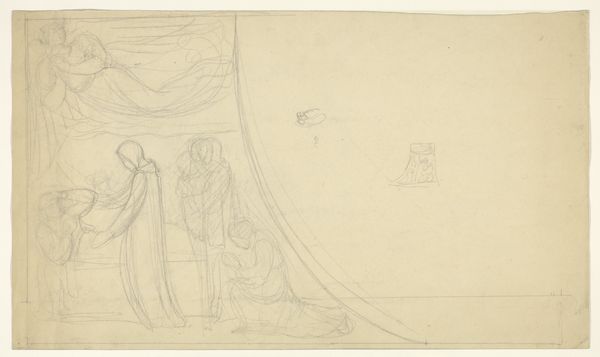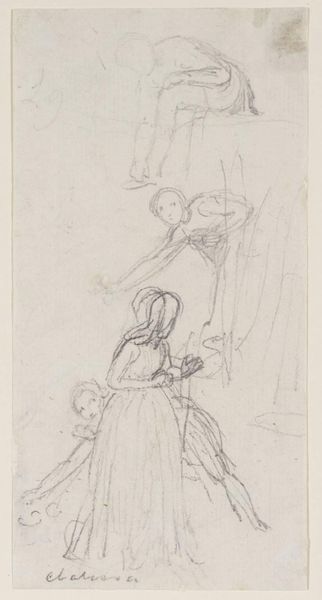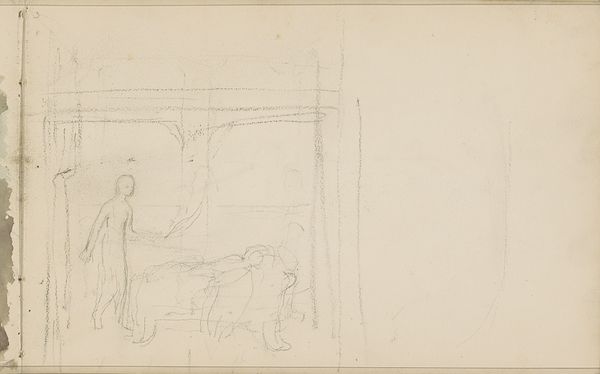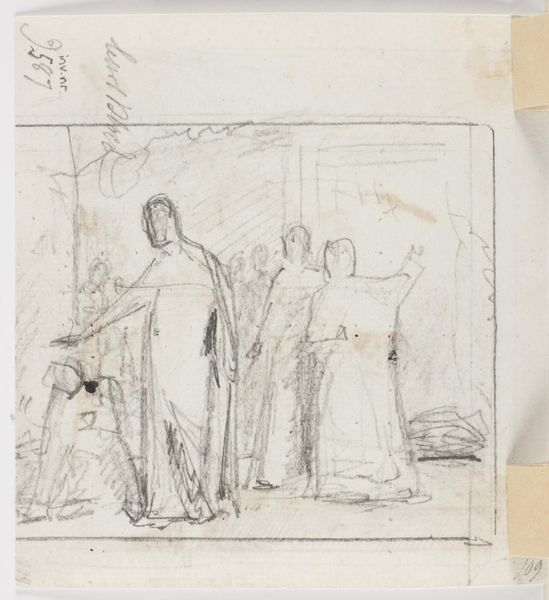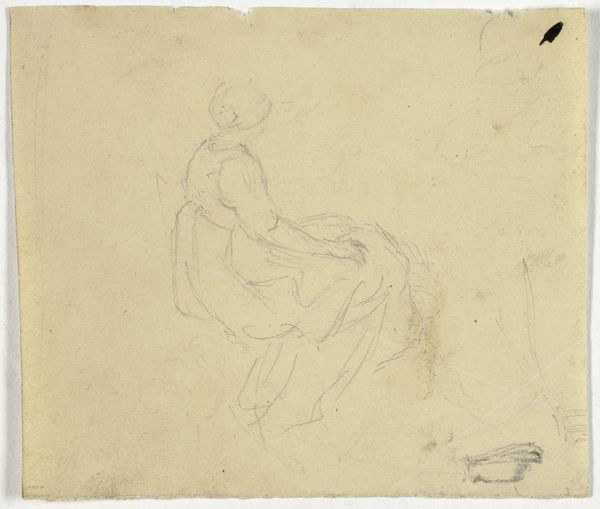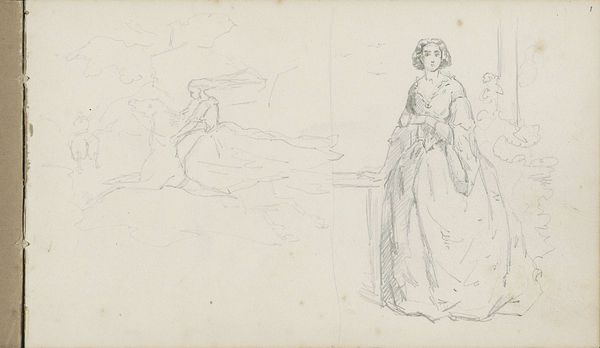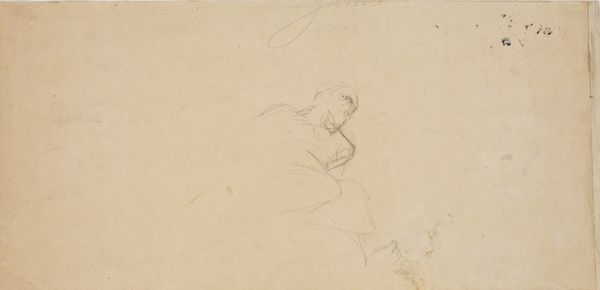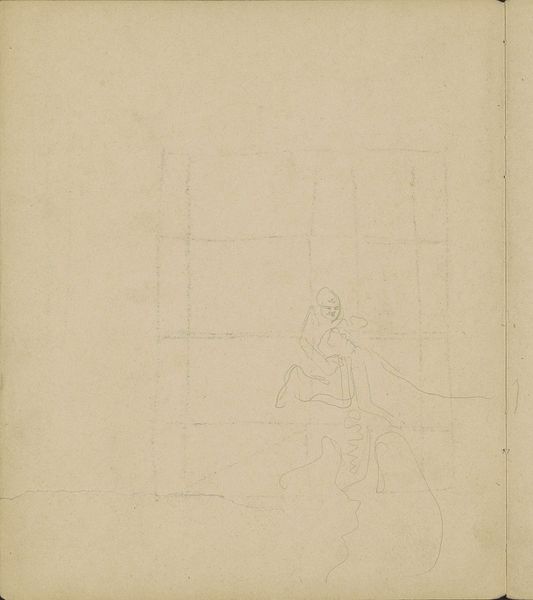
Dimensions: support: 155 x 205 mm
Copyright: NaN
Curator: Here we have William Blake’s "Detailed Drawings for ‘A Figure Standing in a Gothic Apse,’" the date is unknown. What strikes you first about it? Editor: A dreaminess. It feels ethereal, like a half-remembered vision fading at the edges. Curator: Blake was deeply interested in the production of art, often experimenting with printing techniques. The preliminary quality of these sketches reveals the labor involved in his creative process. Editor: Absolutely. And that labor, that striving... it's what gives it its soul. Like a whispered prayer before the stained glass shattered. Curator: Indeed. The materiality and the social conditions that enable artwork production were central for Blake, who also critiqued the art market's impact on artistic freedom. Editor: I feel like it is a ghost of faith lingering in the paper. Curator: Blake's fusion of craft and vision is a testament to his artistic approach. Editor: Yes, a poignant echo from the past.
Comments
tate 7 months ago
⋮
http://www.tate.org.uk/art/artworks/blake-detailed-drawings-for-a-figure-standing-in-a-gothic-apse-t01335
Join the conversation
Join millions of artists and users on Artera today and experience the ultimate creative platform.
tate 7 months ago
⋮
This sketch, made in his friend John Varley’s sketchbook, is closely related to Blake’s drawing of the Empress Maud, shown nearby. Working quickly and freely in pencil, Blake developed his idea for a painting of a female saint that would decorate the gothic apse of a church. The saint is shown in a landscape, dressed in a loose gown and looking up, perhaps towards God. On the right–hand side of the drawing he has sketched some of the architectural details of the apse and the stained glass, making a note of the colours he plans to use. Gallery label, October 2019
